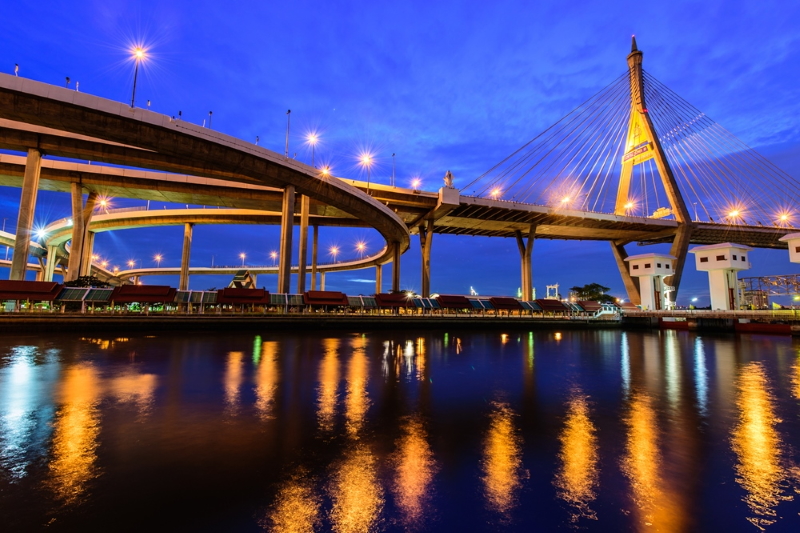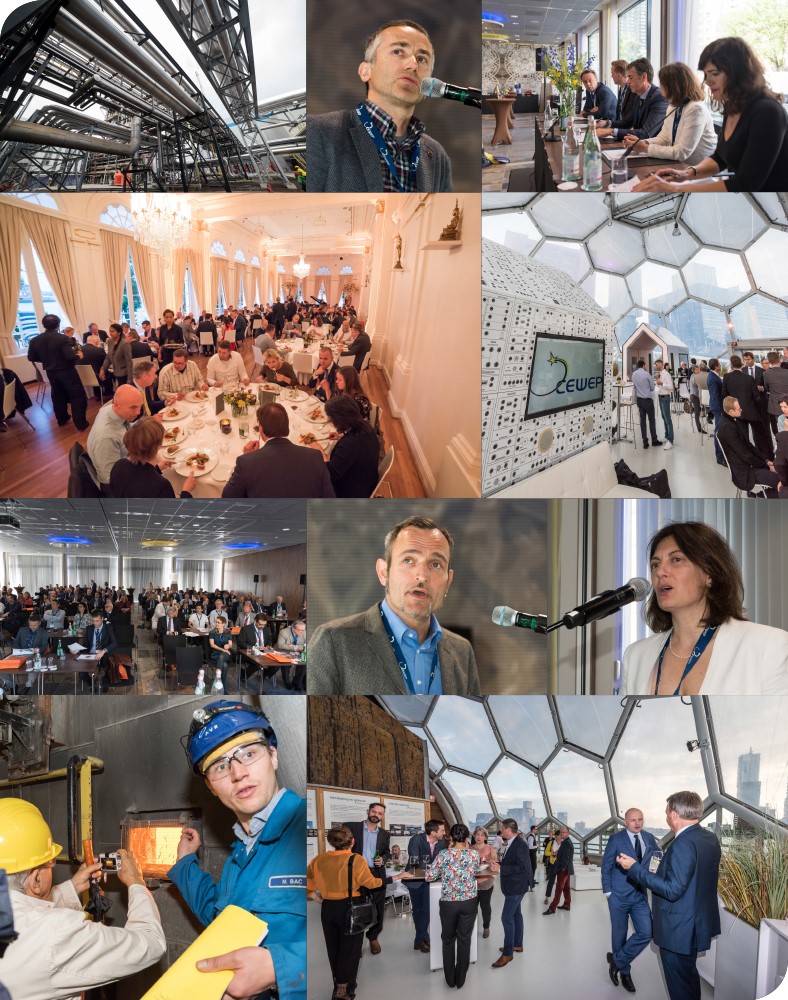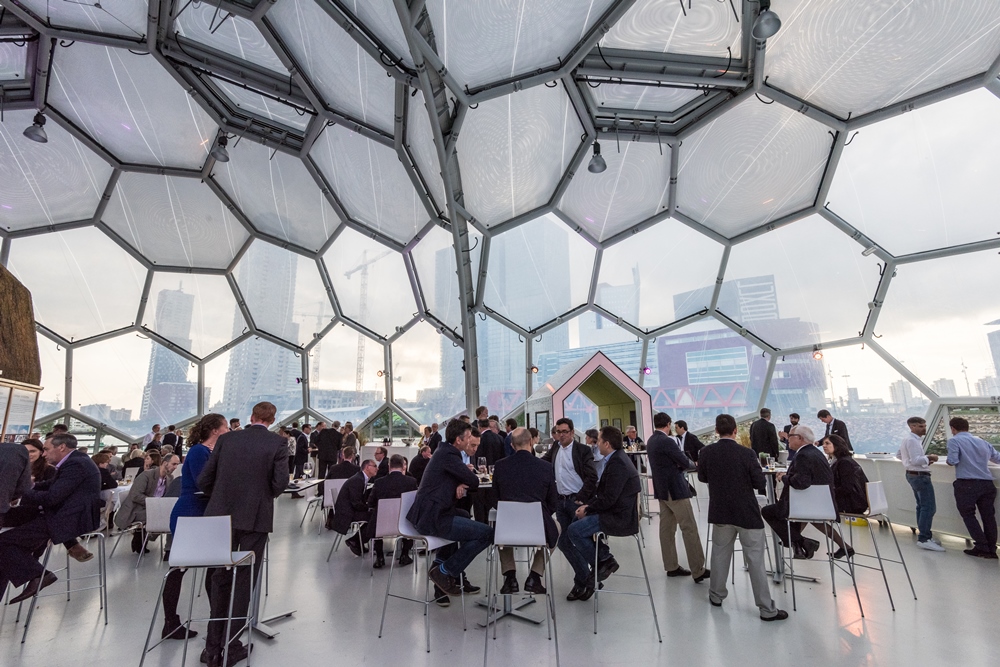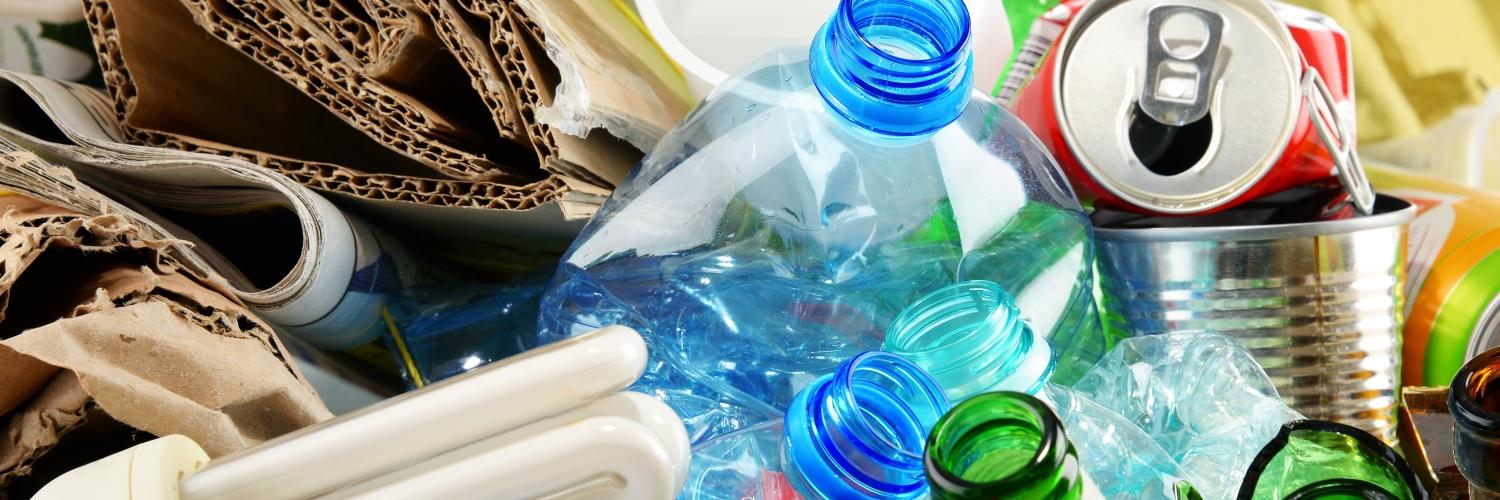4 July 2016
Waste-to-Energy boosts Europe's circular economy
Rotterdam hosts eighth CEWEP Congress
The 2016 CEWEP Congress held this June in Rotterdam looked at waste-to-energy (WtE) from a European perspective. Europe benefits from its high-quality WtE plants. Not only do they generate sustainable energy, but they are also needed to support the transition to a European circular economy. Dutch WtE plants make a positive contribution by importing combustible residual waste from countries where this waste is mostly landfilled.
The European Union's ambitions for creating a circular economy and making energy supply more sustainable go hand in hand. 'It's like Simon and Garfunkel's song Bridge Over Troubled Water,' says Ferdinand Kleppmann, president of CEWEP, the industry organisation for the 390 waste-to-energy (WtE) plants in Europe. He sees a dream becoming reality. 'We have always said that we do not just incinerate waste, but are also part of the energy sector. It is becoming increasingly clear that we can make a big contribution to sustainable energy generation.' WtE plants not only generate sustainable energy, they also help to create the circular economy. The recycling industry produces residual waste streams and the combustible fractions of these streams are treated in WtE plants. 'Because we incinerate only non-recyclable waste, we help to raise the quality of recyclates, which in turn supports the circular economy.'
Ferdinand Kleppmann (CEWEP):
"Because we incinerate only non-recyclable waste, we help to raise the quality of recyclates, which in turn supports the circular economy."

Rotterdam has hosted the eighth CEWEP Congress on 16 and 17 June 2016
Acute shortage
Sustainable energy and the circular economy are hot topics, as evidenced by the European Commission's
Horizon 2020 programme (circular economy) and the Paris climate change agreement. The WtE industry can contribute to solving the problem of resource and energy scarcity, which is gradually becoming acute. Europe is not particularly well endowed with natural resources and energy, and in a period of growing geopolitical tension is increasingly dependent on imports.
CEWEP Congress
It was against this background that Ferdinand Kleppmann opened the eighth CEWEP Waste-to-Energy Congress in Rotterdam. During the congress, which was held on 16 and 17 June 2016, a number of prominent speakers delivered some inspiring presentations. They came from the European Commission, local government, the scientific community and the waste sector. Around 200 participants from almost all the member states came together in the Mainport Hotel at the foot of the Erasmus Bridge. The event kicked off with an informative
CEWEP video about the circular economy. On the second day the participants visited the AVR WtE plant in Rozenburg.
One of the important messages of the congress is that member states should not be fixated on the amount of recycled waste in tonnes, but should aim to raise the quality of recycling. High-quality recycling makes it possible to produce higher quality products and reduces downcycling. Combustible material that cannot be recycled or reused can best be incinerated with the recovery of as much energy as possible.

Unsorted landfill
CEWEP represents more than 390 WtE plants in 22 member states, but they are unevenly distributed across the map of Europe. Most can be found in the northern and north-western member states, while the southern and eastern European countries are underrepresented - and that is exactly where most of the waste still ends up unsorted in landfills. In his presentation, Jorge Diaz Del Castillo of the European Commission's Directorate-General for the Environment confronted the audience with an awkward fact: 'Thirteen member states landfill more than half their household waste. Even if these member states achieve more advanced recycling rates, such as the EU target of 65% recycling of household waste by 2030, there would still be a lot of non-recyclable waste left over to be processed in WtE plants. All that waste is still being landfilled.'
Jorge Diaz Del Castillo (European Commission):
"Even if member states achieve more advanced recycling rates, there would still be a lot of non-recyclable waste left over to be processed in WtE plants. All that waste is still being landfilled."
Biggest importer of residual waste
When it comes to processing the immense stream of residual waste, much is expected of the Netherlands, which has 12 WtE plants. All of them meet high performance standards and have R1-status, a European standard indicating that they achieve a high level of energy efficiency. But are 12 WtE plants too much of a good thing? After all, the volume of residual waste in the Netherlands is steadily falling and many local authorities are working hard to establish a local circular economy and climate neutral towns and cities. But given the available capacity across Europe as a whole, there are huge opportunities for Dutch WtE plants to take combustible residual waste from countries that currently landfill much of their waste. Import volumes are high, the conference was told. In fact, according to Eurostat figures produced by CEWEP, the Netherlands is Europe's biggest waste importer, at 1.6 million tonnes per year, followed by Sweden (1.4 Mt). Most of this residual waste comes from the United Kingdom, Ireland and to a lesser extent Italy.
Heat from waste
A growing number of the Dutch WtE plants not only produce electricity, but also generate steam and supply heat to district heating schemes. Yves Luca, CEO of AVR, which owns one of the world's biggest WtE plants with a capacity of 1.7 Mt per year, explained how the incineration of household waste in its Rozenburg plant near Rotterdam supplies heat to two district heating networks dozens of kilometres long, providing warmth to 50,000 and 100,000 households. 'But not before we have first generated steam which is fed through a three kilometre long pipeline to Emerald Kalama Chemicals, allowing them to considerably reduce the carbon emissions from their production process.' The WtE plants also produce CO2 in large quantities. AVR have an interesting proposal for dealing with this greenhouse gas. They plan to collect it and refine it to a quality that can be used by growers in the nearby Westland greenhouse horticulture complex to improve crop growth.

Landfill tax as a stimulus
Of course, these member states must become self-sufficient to a certain extent, said Diaz Del Castillo. He takes roadshows through Europe to talk to governments and local authorities and tries to convince them to develop recycling capacity. In Italy, though, he has recently taken a more hard-line approach. According to the senior EU official 'Italy pays 120,000 euros each day in fines for contravening the Landfill Directive.' England has sensibly avoided such fines, as Jarno Stet of Westminster City Council explained. 'In England the landfill tax introduced in 2008 is a strong incentive. In Westminster we are increasing recycling rates by improving the separate collection of waste. What is left over is sent to the incinerator.' For the time being England will avoid having to make any major investments in new incineration capacity by exporting a small proportion of its combustible waste. Those who believe that transporting all this waste is bad for the environment are wrong. 'Many ships that transport goods from Germany and other countries to England return empty,' said Diaz del Castillo.
Jarno Stet (Westminster City Council, UK):
"In England the landfill tax is a strong incentive for more recycling."
Recovering raw materials and energy
Dutch WtE plants do their utmost to extract as much useful material and energy as possible from the residual waste they burn. Using innovative techniques they are able to recover increasing amounts of clean building materials from bottom ash. In 2012 nine WtE plants signed a Green Deal on bottom ash with the Dutch government. The aim of this agreement is to ensure that by 2017 at least half of the raw materials recovered from bottom ash can be used as clean building materials, for example in the form of a product for making things like paving slabs.




